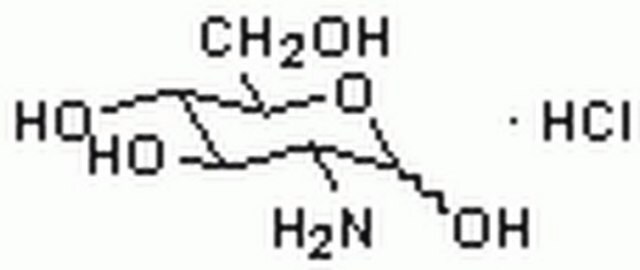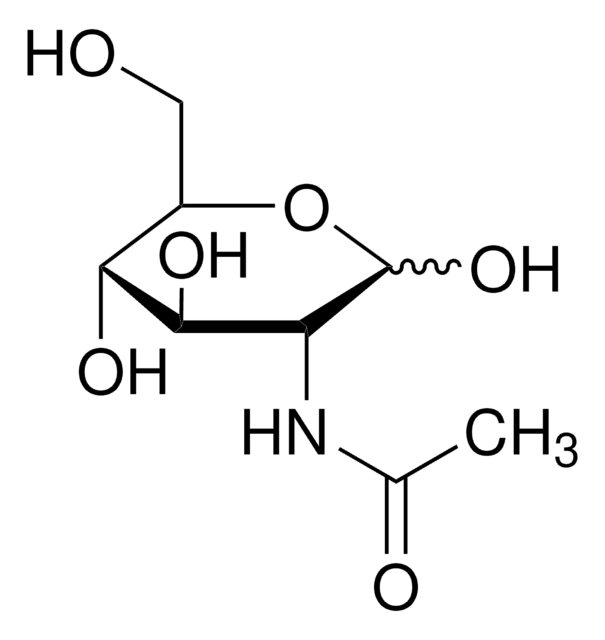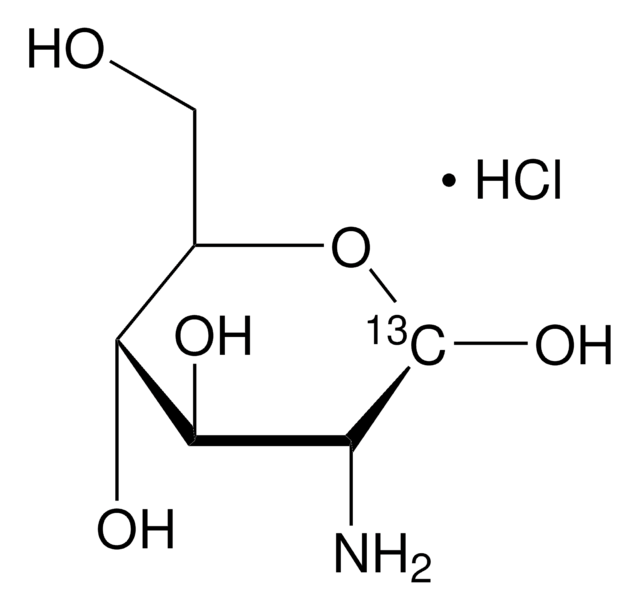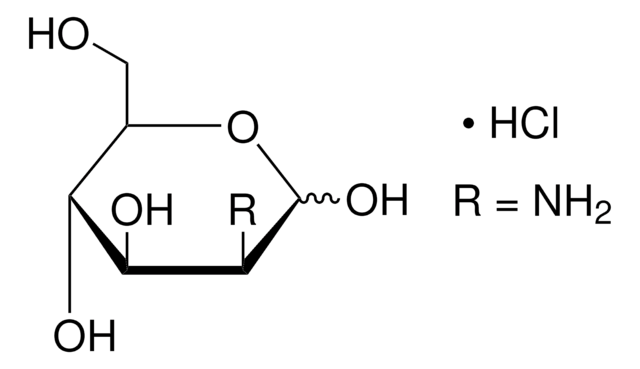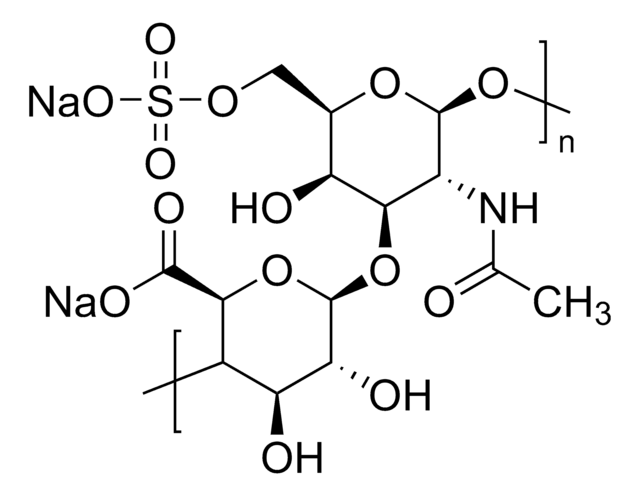Kluczowe dokumenty
Y0001406
Glucosamine hydrochloride
European Pharmacopoeia (EP) Reference Standard
Synonim(y):
D-(+)-Glucosamine hydrochloride, 2-Amino-2-deoxy-D-glucose hydrochloride, Chitosamine hydrochloride
About This Item
Polecane produkty
klasa czystości
pharmaceutical primary standard
agency
EP Reference Standard
rodzina API
glucosamine
producent / nazwa handlowa
EDQM
mp
190-194 °C (dec.) (lit.)
Zastosowanie
pharmaceutical (small molecule)
Format
neat
temp. przechowywania
2-8°C
ciąg SMILES
Cl.N[C@H]1C(O)O[C@H](CO)[C@@H](O)[C@@H]1O
InChI
1S/C6H13NO5.ClH/c7-3-5(10)4(9)2(1-8)12-6(3)11;/h2-6,8-11H,1,7H2;1H/t2-,3-,4-,5-,6?;/m1./s1
Klucz InChI
QKPLRMLTKYXDST-NSEZLWDYSA-N
Szukasz podobnych produktów? Odwiedź Przewodnik dotyczący porównywania produktów
Opis ogólny
Zastosowanie
Działania biochem./fizjol.
Opakowanie
Inne uwagi
produkt powiązany
Kod klasy składowania
11 - Combustible Solids
Klasa zagrożenia wodnego (WGK)
WGK 2
Temperatura zapłonu (°F)
Not applicable
Temperatura zapłonu (°C)
Not applicable
Wybierz jedną z najnowszych wersji:
Certyfikaty analizy (CoA)
Przepraszamy, ale COA dla tego produktu nie jest aktualnie dostępny online.
Proszę o kontakt, jeśli potrzebna jest pomoc Obsługa Klienta
Masz już ten produkt?
Dokumenty związane z niedawno zakupionymi produktami zostały zamieszczone w Bibliotece dokumentów.
Klienci oglądali również te produkty
Nasz zespół naukowców ma doświadczenie we wszystkich obszarach badań, w tym w naukach przyrodniczych, materiałoznawstwie, syntezie chemicznej, chromatografii, analityce i wielu innych dziedzinach.
Skontaktuj się z zespołem ds. pomocy technicznej

